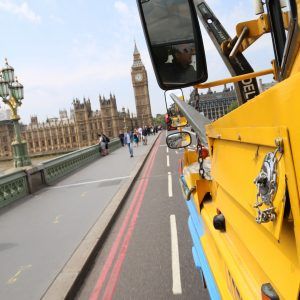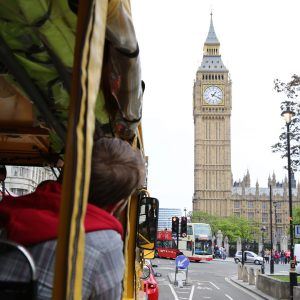Often referred to as the Old Lady of Threadneedle Street, the Bank of England has “only” been located in Threadneedle Street in the City of London since 1734. Prior to this the Bank was in Mercers Hall on Cheapside and then in Walbrook. Where London Duck Tours keeps all its loose change, the Bank of England’s key function is to maintain monetary and financial stability in the country.
Founded in 1694, it is the central bank of the United Kingdom, formed at a time when the public finances in England were floundering. A national bank was needed to stabilise the economy, secure the credit system, and mobilise the nation’s untapped resources.
The Public Exchequer
Founder William Paterson proposed a loan of £1,200,000 to the Government. In return the contributors or “subscribers” to the loan would be incorporated as the Governor and Company of the Bank of England. Within just a few short weeks the money was raised, and the Bank began was formed, principally acting to manage the Governments accounts, debts and finances. Known unofficially as the Public Exchequer for its influence on Government spending, the Bank was able to make significant loans to the Government, to finance extraordinary amounts of spending during the periods of peace and war. During the 18th Century the Government borrowed too heavily from the Bank, the unpaid loans grouped together and labelled The National Debt. It also became a commercial bank, taking deposits from the public and issuing bank notes.
Architecture
Although to the casual observer the imposing grey bulk of the current Bank of England looks like it has stood there for centuries, the building we see today actually dates from the first third of the 20th Century, designed between 1925 and 1939 by Sir Herbert Baker. Although the earliest parts of “The Old Bank” were designed by lesser known 18thCentury architects George Sampson and Sir Robert Taylor, the more famously elegant neo-classical building, much missed and lamented by historians, was designed by Sir John Soane, who worked on the design for 45 years between the 1780s and 1830s. This building was demolished to make way for the current structure.
Baker’s building covers the same three and half acre site as Soane’s design, but todays Bank of England is in fact eleven floors high, with three stories hidden underground a further seven storeys above ground level to accommodate the space required for the modern Bank’s staff.
Getting into the Bank – legally
The Bank of England building is open to visitors on a few weekends a year, when tourists can see such novelties as the inner courtyard, where large Mulberry trees grow – the same variety of trees used to form the very earliest examples of paper money in 10th Century China. Visitors must book far in advance to attend the free guided tours of the more secret parts of the building, not usually open to the general public.
The foyer of the Bank also contains a Roman mosaic, and an 18th century wind dial, which allowed the Bank’s Directors to forecast the arrival of merchant ships into the Port of London, and therefore predict the price of the ships’ stock value.
Bank of England Museum
The Bank’s museum is open on a regular basis, and has a very comprehensive and extensive set of collections that cover the history of money, the Banks historic and current role in the stability and success of the British economy, as well as a significant collection of art and cartoons relating to finance and politics accumulated over the last 300 years.



















